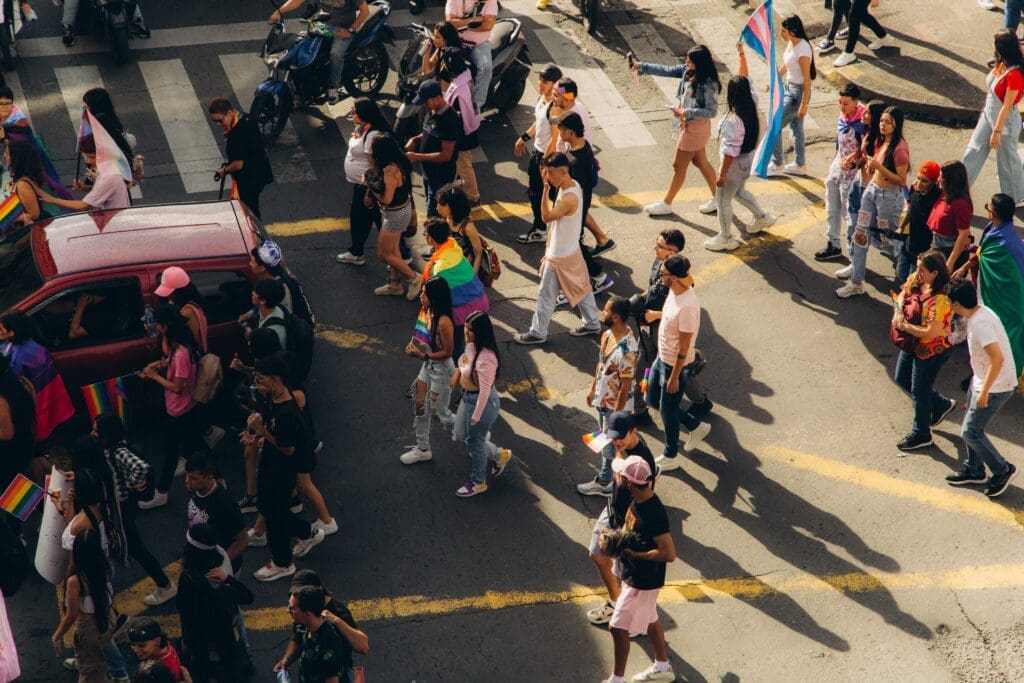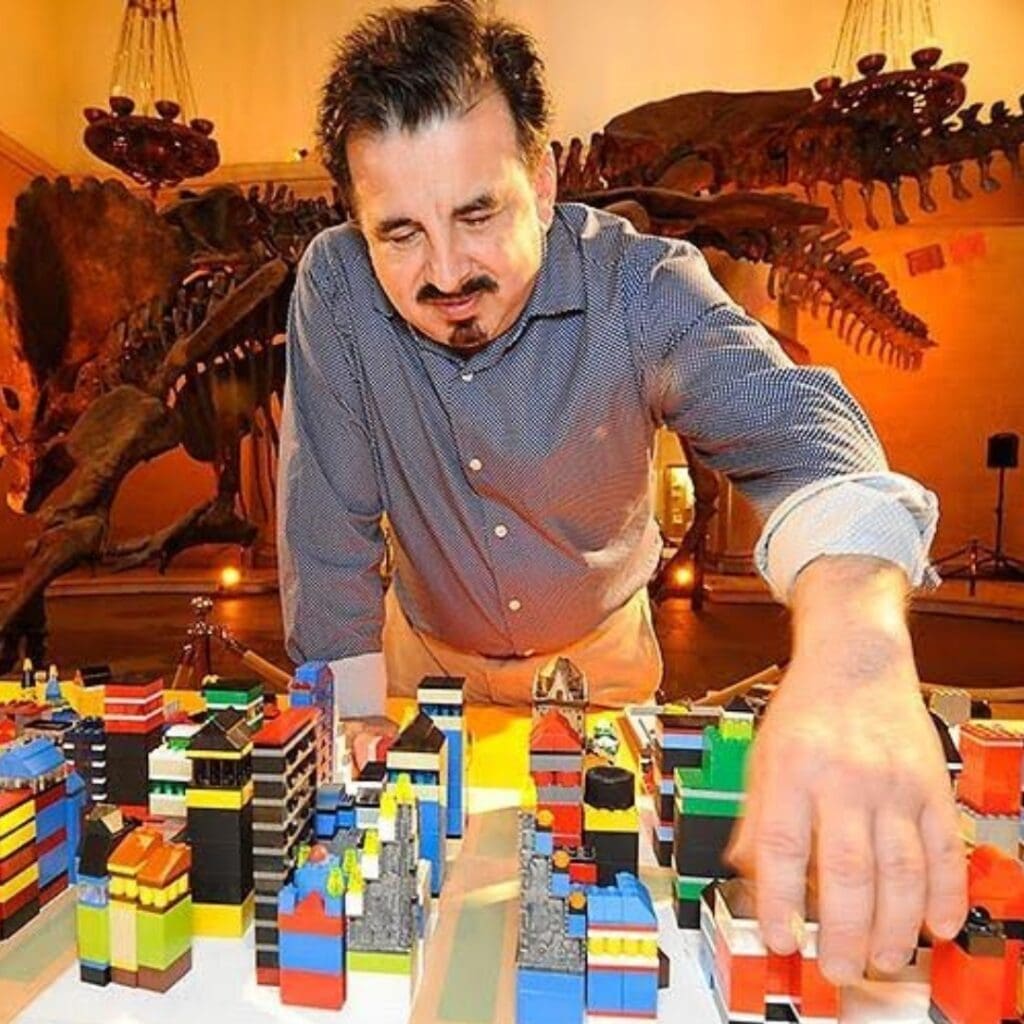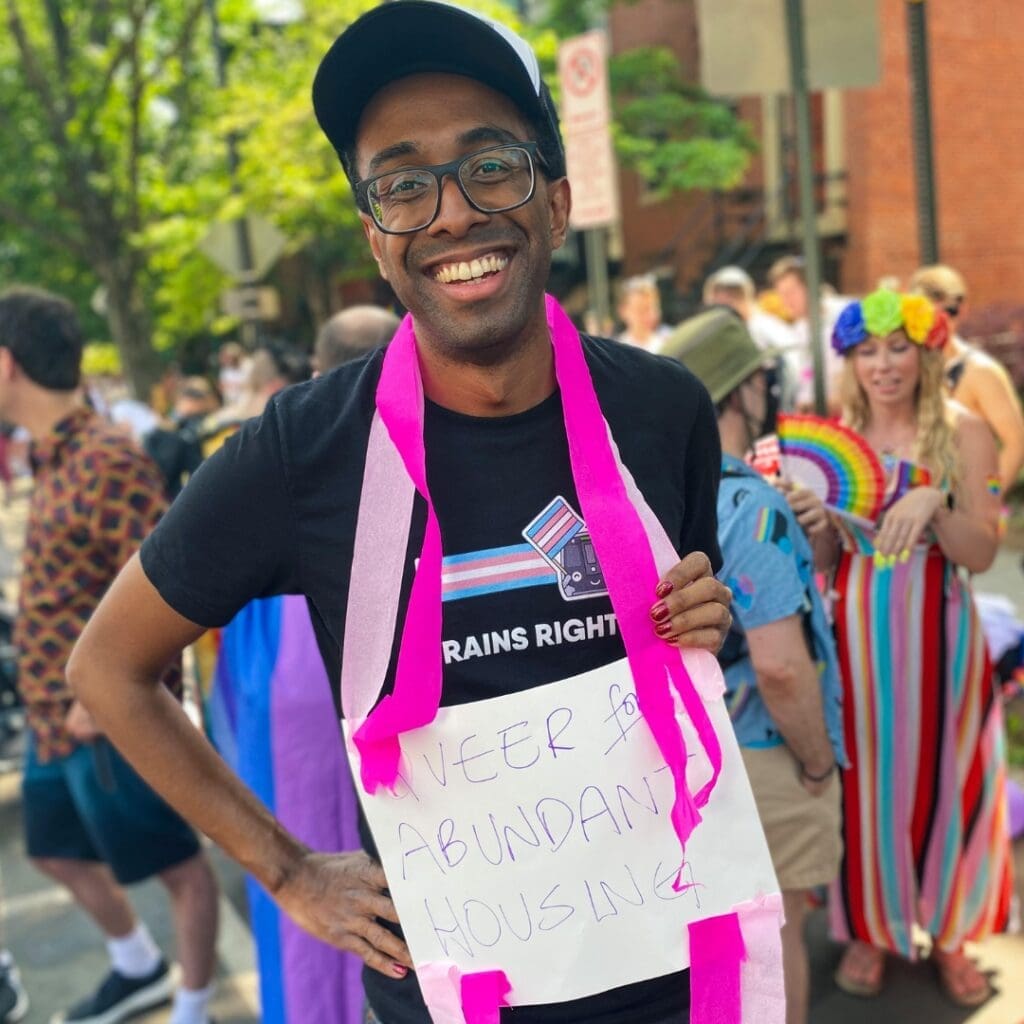
The celebration of the queer community exists beyond Pride Month – they are an integral part of our society for the other 335 days of the year too. How can we design communities to be more inclusive and equitable while simultaneously addressing the needs of the LGBTQ+ community? We interviewed two queer urban planners who understand the intersectionality of where urbanism not only meets but acknowledges queer voices and contributions. Their work has helped build a foundation for others in the space to follow and create safe, joyful, and vibrant spaces. We are thankful for their insight as it helps America Walks continue to uplift and amplify LGBTQ+ folks in our communities both personally and professionally.
How the LGBTQ+ Community is Carving out a Space in Urban Planning
Ruth Rosas: How does walkability and accessibility contribute to the celebration and visibility of the LGBTQ community during Pride Month? Are there any specific initiatives or strategies that advocates can engage to understand in this connection?

Urban Planner
https://www.placeit.org/
James Rojas: The LGBTQ+ community historically has not always had many places to feel safe, however the anonymity of big city streets had advantages for the community. The streets are for everyone, walking, and public space gives us those spaces to be. Walking, strolling, cruising has always been an important part of the LGBTQ culture.
Streets are not queer per say but it’s the queer perspective that people bring into the space, which changes its feeling, and meaning. Through their memories, needs and aspirations queer people navigate streets differently than straight people. Queer’s have been taught to look for subtle cues like a glance or a smile to gauge if a space is safe for them or not.
Historically, heterosexual and cisgender people have had more freedom to walk, explore, and shape their streets. Transportation planners need to know what emotions, and memories people bring into the streets. While intangible, for the individual they are as real as the brick and mortar. Planners need to take a better role listening and understanding these intangible feelings.
If you really want to understand the accessibility of the street, you have to engage queer people. Engaging people from the LGBTQ+ community in projects is essential because we can see the nuance in walkability and accessibility. We are much more aware and can see what makes a street or place safe and not safe.
Dan Reed: On average, queer people are more likely to experience economic hardship, so being able to afford to live without a car means that you can fully participate in the community. Walkability is about promoting a quality public realm, being able to get around without a car, and fully participating in society. For queer people, walking is a powerful tool we use to exist in society.
You have to engage queer people by going where people are, where they congregate, where they feel safe and comfortable, and work with organizations that provide social services, such as healthcare and housing, to queer people. You also have to create meetings and events where people can go and at accessible times.

Regional Policy Director, Greater Greater Washington
https://ggwash.org/contributors/danreed
Rosas: In your experience, how does the design of walkable neighborhoods impact the accessibility and inclusivity of the LGBTQ+ community? Can you provide examples of urbanism approaches that have successfully supported the LGBTQ+ community?
Rojas: West Hollywood, Chicago’s Boys Town, NYC West Village, San Francisco’s Castro and other gay communities are all very walkable. Their urban design is dense, small scale, interesting, and promotes social life. What are the lessons we can learn?
To create spaces that are inclusive of the LGBTQ+ community means designing spaces where people can be safe, comfortable, and can experience joy.
Reed: Queer people have sought urban environments because we are more accepted there. Dense, walkable communities help people feel part of something. Within urban walkable environments, there are design elements we can include to show inclusivity and belonging. However, within urban planning, there are standards. For example, the MUTCD, which sets the standards for traffic control devices across the country, does not allow rainbow crosswalks.
It shouldn’t be so hard to symbolize inclusivity but some of the standards we have make it hard. Despite these issues, many cities have gone and approved rainbow crosswalks. There are other ways to include design elements, such as murals, to create welcoming and supportive places for queer people.
Rosas: Walkability is often associated with creating vibrant and socially connected communities. How can advocates leverage walkable environments to foster a sense of belonging and support for LGBTQ individuals beyond Pride Month?
Rojas: Too many planners become enamored with tools that they apply without fundamentally understanding the people, the place or the community – planners impose a one-size-fits-all answer. For example most planners think that if they develop an equity policy/matrix the problem will go away.
We need to understand the people’s memories, needs and aspirations first so we can make walking safer from crime and cars. We have to think about how cars damage people’s sense of place and joy.
Reed: We need to lower the bar for participation for queer people, which includes more inclusive and welcoming spaces and lowering the cost of services. Having a robust public realm where people can go and gather, where queer people can feel safe to gather. It all starts there. It may not seem inherent to queer people but it is a big part of the culture. Things that are good for queer people are good for all people.
Rosas: Can you share examples of successful collaborations between advocates, community organizations, and transportation professionals that have enhanced walkability and accessibility for the LGBTQ community?
Rojas: John Chase was a West Hollywood urban designer who led innovative projects on streetscape improvements in LA to get the people to walk more. One of his significant projects included the Santa Monica Boulevard Streetscape Project. Many of his projects included adding bus shelters and pedestrian lighting.
Rosas: What advice would you offer to other LGBTQ+ advocates looking to jumpstart similar work in their communities?
Rojas: My advice is to start the pedestrian or transportation planning process by having participants build with objects their favorite childhood memory, or favorite mobility experience. This information will help participants understand how their values, needs, and use space.
This memory highlights our personal relation to place and other people. It’s our DNA for wellbeing in public space because these childhood spaces were fun, safe, and enduring. By building it we examine the physical, social, emotional elements that created it. As planners, advocates, and participants we need to uplift these design elements and feelings to start the design and planning process for safe, comfortable and inclusive streets.
Reed: I think it’s important to remember to collaborate. Some of the best work happens when advocacy organizations who work on different issues, such as accessibility to healthcare, housing, or transportation, work together. So find people who are passionate about making their communities safe places.
When Pride happens, we close streets down to car traffic, we have parades and we celebrate. Pride is joyful and safe. So how do we make a street as good as that on an everyday basis? That’s the goal.
James Rojas is a gay, Chicano urban planner and community activist who has developed hands-on community engagement methods through creativity and the arts.
Dan Reed is an urban planner and writer who has worked with communities across the United States to make spaces that are safe and enjoyable places to be.
For more resources on the intersection of queer urbanism and placemaking and our reading list, check out the links below:
https://queerplacemaking.wordpress.com/
https://americawalks.org/freedom-to-move-trans-rights/
https://forecastpublicart.org/queer-urbanism/
https://culturehouse.medium.com/we-need-queer-urbanism-aee5d5934d40
https://ggwash.org/view/79495/why-so-many-people-in-the-queer-community-love-urbanism
https://www.itdp.org/2023/03/29/transgender-day-of-visibility-public-transport/
https://www.adl.org/resources/tools-and-strategies/lgbtq-pride-month-and-education-resources